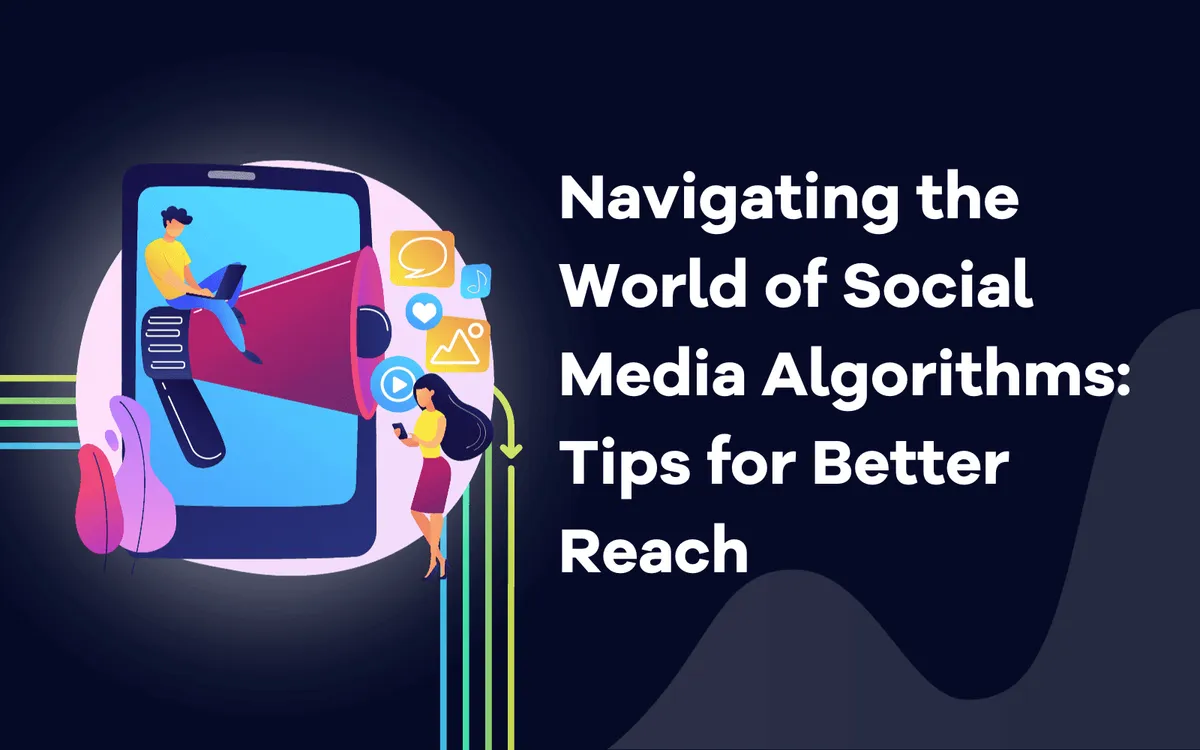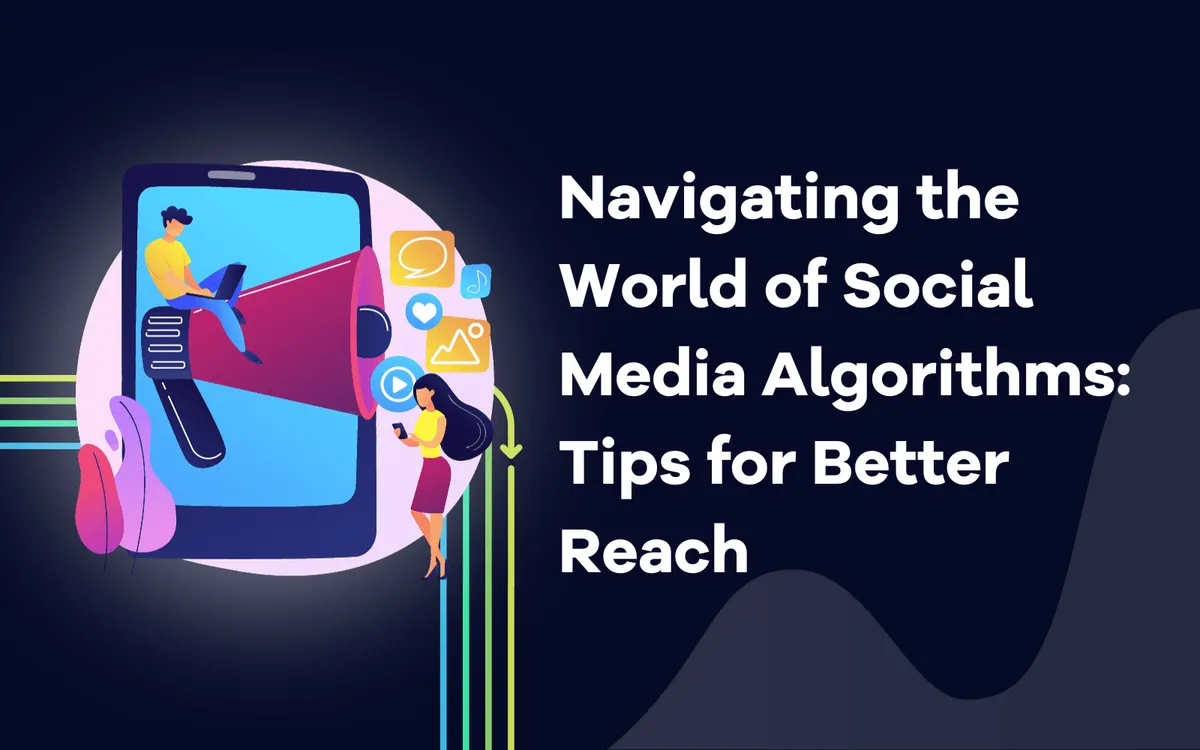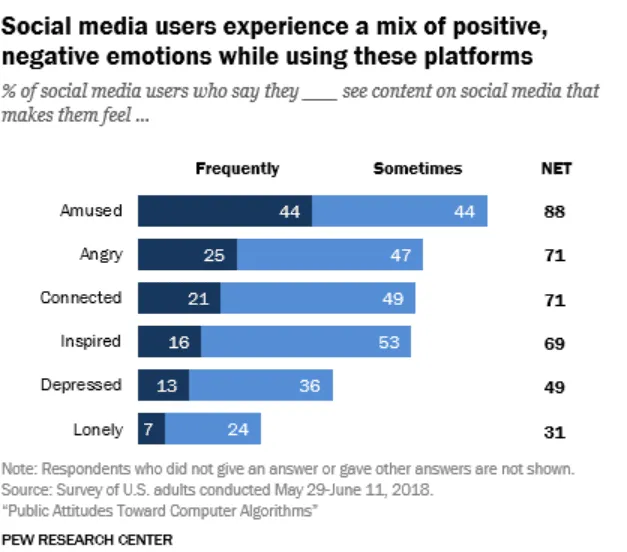
Navigating the World of Social Media Algorithms: Tips for Better Reach

Nayana Bhasurasen
November 22, 2023
Master social media algorithms and boost your reach with our expert tips. Learn how to navigate the world of social media to connect with your audience effectively.

Social media has become an integral part of our lives, both personally and professionally. Whether you are an individual looking to share your experiences or a business striving to connect with your target audience, social media algorithms play a pivotal role in determining the reach and impact of your content.
With platforms constantly evolving and algorithms becoming increasingly complex, staying visible and engaged can be a daunting task. In this article, we will explain the intricate realm of social media algorithms, offering you valuable insights and practical tips to enhance your online presence and ultimately achieve better reach on your preferred social media platforms.
Understanding Social Media Algorithms
Social media algorithms analyze content that users see in their feeds. Therefore, they play a crucial role in shaping the user experience.

Source: Pewresearch
Overview of Major Social Media Platforms
Understanding social media algorithms can help users and content creators maximize their engagement and visibility. These algorithms are constantly evolving, and the specific details of how they work can change over time.
News Feed Algorithm: Facebook's News Feed algorithm is designed to show users content that is relevant to their interests and engagement history. It considers factors like post engagement (likes, comments, shares), content type, recency, and the user's past interactions with the content creator.
Ads Algorithm: Facebook uses an advertising algorithm to target users with relevant ads based on their demographic information, interests, and online behavior.
Instagram
Feed Algorithm: Instagram's feed algorithm prioritizes content based on user engagement and interest. It considers factors like likes, comments, and how recently the post was published.
Explore Page Algorithm: The Explore page algorithm suggests content to users based on their past interactions and interests.
Twitter
Timeline Algorithm: Twitter's timeline displays tweets in reverse chronological order by default, but the platform also employs an algorithm to show "Top Tweets" at the top of the timeline. These top tweets are selected based on user engagement and relevance.
Recommendations Algorithm: Twitter suggests accounts to follow and trending topics based on user interests and activity.
TikTok
For You Page (FYP) Algorithm: TikTok's FYP algorithm curates a personalized feed for each user, primarily based on their interactions with content. It takes into account watch time, likes, shares, comments, and device/account settings.
Following Page Algorithm: The "Following" page shows content from users you follow in chronological order.
LinkedIn
Feed Algorithm: LinkedIn's algorithm prioritizes content in the feed based on relevance to the user's industry, connections, and engagement history. It considers factors like post engagement and content type.
Suggested Connections and Content: LinkedIn suggests connections and content to users based on their professional network and interests.
Key Factors that Influence Social Media Algorithms
Engagement Metrics (likes, comments, shares)
Social media algorithms are heavily influenced by engagement metrics such as likes, comments, and shares. Just like LLMs are trained on terabytes of data and often require LLM fine-tuning for better outputs, the above-mentioned algorithms are greatly impacted by engagement indicators. These metrics indicate the level of interaction and interest a post generates among users.
Content Relevance
Relevance is a critical factor in determining how social media algorithms rank and display content. Algorithms analyze various aspects of a post, including keywords, hashtags, and the content's context to assess its relevance to a user's interests and preferences.
Timing and Frequency of Posts
Algorithms take into account when your audience is most active and engaged on the platform, so posting during these peak times can lead to better exposure. Additionally, overloading your followers with too many posts in a short time frame can have a negative impact.
User Behavior and Preferences
Social media algorithms are designed to learn and adapt to individual user behavior and preferences. They consider factors such as the types of content users engage with, the accounts they follow, and the time they spend on different posts. As users interact with the platform, the algorithm tailors their feed to display content that is more likely to keep them engaged.
Algorithm Updates and Changes
Social media platforms frequently update and change their algorithms to improve the user experience and combat issues like misinformation and spam. Staying informed about these updates is crucial for content creators and businesses. New algorithm changes may require adjustments to your content strategy and tactics to ensure continued visibility and success on the platform.
Tips for Enhancing Reach on Social Media
Create High-Quality Content
Producing high-quality content is the cornerstone of any successful social media strategy. It's essential to ensure that your posts are well-researched, informative, and valuable to your target audience. This includes using well-written and engaging captions, relevant images, and multimedia elements.
Importance of Compelling Visuals and Storytelling
Visual content, such as images and graphics, is a powerful tool for grabbing your audience's attention and conveying your message effectively. Storytelling, on the other hand, adds a personal touch to your brand and helps your audience connect with your content on a deeper level.
The Role of Video Content
Short video clips, live streams, and longer-form videos engage audiences in diverse ways. They provide a dynamic means of sharing information and connecting with your followers. Incorporating video content can significantly boost your reach and engagement, making it a vital component of any successful social media strategy.
Consistency in Branding and Messaging
Consistency fosters trust and loyalty among your audience, making it easier for them to identify and relate to your content. Ensure that your brand's voice, logo, color scheme, and overall aesthetic remain constant throughout your social media presence.
Engage Your Audience
Engagement is the key to building a loyal social media following. Actively engaging with your audience not only strengthens your connection but also boosts your content's visibility as algorithms favor posts that generate discussion.
Encouraging User Interactions
Go beyond likes and comments by encouraging user-generated content. Host contests, challenges, or campaigns that invite your audience to participate and create content related to your brand. This user-generated content not only extends your reach but also authenticates your brand's appeal.
Promptly Responding to Comments and Messages
Timely response to comments and messages demonstrate your commitment to your audience. It fosters a sense of community and trust. Make it a priority to address questions, concerns, and feedback promptly to keep your audience engaged and satisfied.
Collaborations and Influencer Partnerships
Collaborating with influencers or complementary brands can help expand your social media reach. Partnering with influencers can introduce your content to their followers, offering an opportunity to tap into new audiences and increase engagement.
Understand Platform-Specific Strategies
Different social media platforms have unique dynamics and user preferences. Understanding these differences is essential for tailoring your content to each platform effectively.
Tailoring Content to Each Platform
Each platform has its own content format and style requirements. Adapting your content to the specific format ensures that your posts are more appealing and shareable to the specific audience you are targeting.
Effective Use of Hashtags and Keywords
Incorporate relevant hashtags and keywords into your content to increase its discoverability. Research and use trending keywords and hashtags that are relevant to your content and audience.
Leverage Data and Analytics
Regularly monitoring your social media analytics allows you to track the performance of your content and make data-driven decisions to improve your strategy. Simultaneously, managing and securing data in your social media analytics is vital to safeguard sensitive information and maintain trust with your audience.
The Value of Analytics Tools
Utilize social media analytics tools to gain insights into what works the best. This information can help you refine your content and posting strategies for better results.
Using Insights to Refine Content and Posting Strategies
Analyze the data from your analytics tools to understand which content resonates with your audience and the best times to post. Adjust your strategy based on these insights to maximize reach and engagement.
Stay Informed about Algorithm Updates
Social media platforms frequently update their algorithms, which can impact the visibility of your content. Staying informed about these changes is crucial for adapting your strategies accordingly.
Keeping Up with Platform Announcements
Regularly check for platform announcements and updates, as they often contain valuable information about changes in algorithms, new features, or policies that can affect your social media presence.
Adapting Strategies to Algorithm Changes
When algorithms change, it's important to adjust your tactics to align with the platform's new priorities. Experiment with different approaches to regain visibility and engagement, and stay adaptable to remain effective on social media.
Social Media Algorithm Examples
Personalized Feeds
Both Facebook and Instagram use algorithms to curate users' feeds. For example, they prioritize showing content from friends and accounts that a user frequently interacts with. They also consider the types of posts a user engages with, whether it's photos, videos, or links, to tailor the content displayed in their feed.

Engagement Metrics
Algorithms consider engagement metrics such as the number of likes, comments, shares, and clicks on a post to determine its popularity. Posts with higher engagement are more likely to be displayed to a wider audience.
Recency
Some algorithms prioritize recent content to keep users up-to-date with the latest posts from accounts they follow.
User Behavior
Algorithms may analyze a user's behavior patterns, such as the time of day they are most active or the types of content they engage with, to optimize the timing and content of the posts in their feed.
Video and Live Content
Video content, particularly live videos, is often given preference in social media algorithms due to its engaging nature.
Stories
Many platforms have integrated "Stories" into their algorithms, allowing users to share temporary, short-form content. Stories often appear at the top of the feed and are a key part of algorithmic decisions.
Quality and Authenticity
Social media platforms aim to reduce the visibility of low-quality or fake content. Algorithms may consider factors like the source's credibility and the authenticity of the content.
Paid Promotion
Advertising is an important part of social media revenue. Algorithms allow advertisers to target specific demographics and interests, integrating paid content into users' feeds.
Explore and Discovery Features
Algorithms are often used to suggest new accounts to follow, groups to join, or topics of interest through "Explore" or "Discovery" features.
Overcoming Common Challenges
Dealing with challenges related to declining organic reach, navigating algorithm changes, and finding the right balance between organic and paid strategies is essential for a successful digital marketing strategy.
Improve the Declining Organic Reach
Focus on creating high-quality, engaging content that resonates with your target audience. This can improve your organic reach as people are more likely to share and interact with valuable content.
Invest in search engine optimization (SEO) to improve your website's visibility in search results. This can help drive organic traffic to your site.
Encourage your customers or followers to create and share content. User-generated content can boost organic reach and authenticity.
Respond to comments, and messages, and engage with your audience on social media. Building a community around your brand can increase organic reach.
Navigating Algorithm Changes
Keep up-to-date with platform algorithm changes. Social media and search engines often provide updates and guidelines that can help you adapt to algorithm changes.
Don't rely solely on one platform. Diversify your online presence across different platforms.
Continuously test different content and strategies to see what works best. Be prepared to adapt your approach based on the results.
Consider using paid advertising to boost content that is affected by algorithm changes. Paid promotion can help maintain visibility.
Balancing between Organic and Paid Strategies
Define your objectives and what you want to achieve with both organic and paid strategies. This will help you allocate resources effectively.
Ensure your organic and paid strategies complement each other. For instance, use organic content to build brand awareness and paid ads to drive conversions.
Allocate your budget based on your goals and the specific strengths of each strategy. Monitor performance and adjust as needed.
Use data from organic interactions to inform your paid campaigns. Retargeting can be a powerful way to convert organic traffic into paying customers.
Use analytics tools to measure the performance of both organic and paid strategies. Adjust your approach based on the data to maximize ROI.
Building and nurturing an email list is an excellent way to maintain a direct line of communication with your audience, regardless of algorithm changes.
Conclusion
While social media algorithms may continue to evolve, the fundamental principles of creating high-quality, relevant content and engaging authentically with your audience will always be the cornerstone of a successful social media strategy. As we navigate this ever-changing digital realm, staying informed, adaptable, and committed to building genuine connections remains paramount for achieving lasting success in the world of social media.
Related blog posts
The Hidden Flaws in Search Volumes and How to Solve Them
Learn how AI Search Volume delivers reliable search volumes by combining GKP, GSC, and Trends so that you can prioritize the right keywords.
1 July 2025
AI Overviews Are Taking Over SERPs
From traffic drops to decreasing CTRs, AI Overviews are shaking up SEO. Learn what is happening and how AccuRanker helps you track AIO.
25 June 2025
How AccuRanker’s AI Models Fix Inaccurate SEO Data
Struggling with unreliable SEO data? Discover how AccuRanker’s CTR, Search Intent, Search Volume, and Share of Voice deliver accurate insights.
1 June 2025




